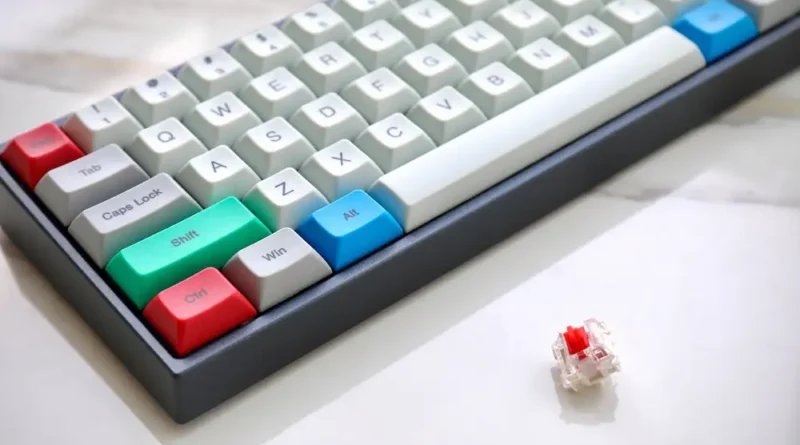Membrane Keyboard vs Mechanical Keyboard
Membrane Keyboard vs Mechanical Keyboard: The keyboard is an integral part of a setup or any device. It is an input device that helps input various character constants for the device to process the information from human language to machine-level language and then binary language. A typical keyboard follows the classic “QWERTY” layout. A standard computer usually contains around 101 keys on it for various input values. There are predominantly two types of keyboards currently used in today’s world, wired and wireless. Within these categories, we have two sub-types of keyboards: a membrane keyboard and a mechanical keyboard. Let’s compare the various aspects and features of the keyboard and test out which is more versatile and valuable.
Membrane Keyboard
A type of keyboard whose keys are connected instead of individual moving parts is popularly known as a membrane keyboard. Such types of keyboards usually don’t have a very quick sensitive touch and have a very feeble tactile feedback to them as the keys are just pressure pads connected to the underlying circuit and hence are very rigid and may cause difficulty when used to type a huge sum of characters. Membrane keyboards are the most common type of keyboard and the first one to be used dates back to the 1980s home computers. They are quite inexpensive and easy to mass-produce. With the introduction of chiclet keys, the keys were at least separated and could be felt individually.
Also Read: How to Clone WhatsApp messages from someone’s phone [2 situations]
Structure and Working Of Membrane Keyboard
The structural representation of membrane keyboards can be laid out as two layers of membranes connected with electrically conductive traces, the middle layer called the “Spacer” containing holes to keep the two layers separated. This works as an open circuit until a key is pressed which pushes down the key and completes the circuit and allows the current to flow hence allowing the tactile feedback. This mechanism is a very old-school form and could be upgraded.
Mechanical Keyboard
Mechanical keyboards each have separate switches underneath each key and have a removable case. These types of keyboards are widely used today. Mechanical keyboards predominantly have 3 types: “linear” with consistency resistance, “tactile” with non-audible bumps and “clicky” with both the bump and click. Based on the integrity of the strong, various amounts of pressure have to be applied on the keys to trigger and bounce it back out. Mechanical keyboards usually are used primarily for gaming purposes as it requires a quick response rate and because of the functionality of a mechanical keyboard, they are perfectly functional for the provided domain.
Structure and Working of Mechanical Keyboard
Each key(emphasis on the key rather than the entire keyboard like the membrane ones) consists of three components a housing case, a spring and a stem. The housing case also known as the “cap” is replaceable with common stem types. Since the mechanical keyboard has an individual switch underneath each key, it has good tactile feedback and hence is better with each key.
So Which is Better? – Membrane Keyboard vs Mechanical Keyboard
Provided with the various aspects that we have discussed in the above study, I would say the mechanical keyboard is more versatile and has better functionality and can be used for all the purposes that a membrane keyboard is used with better points. Hence, the mechanical keyboard has an upper-hand advantage in this and therefore, is better than membrane keyboards.




